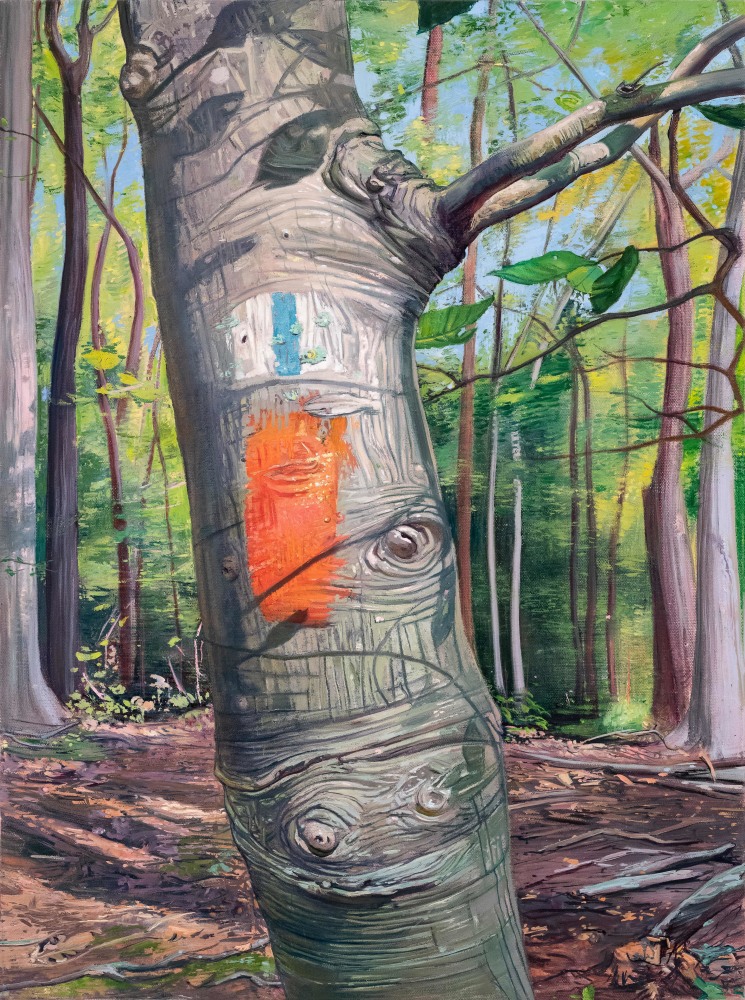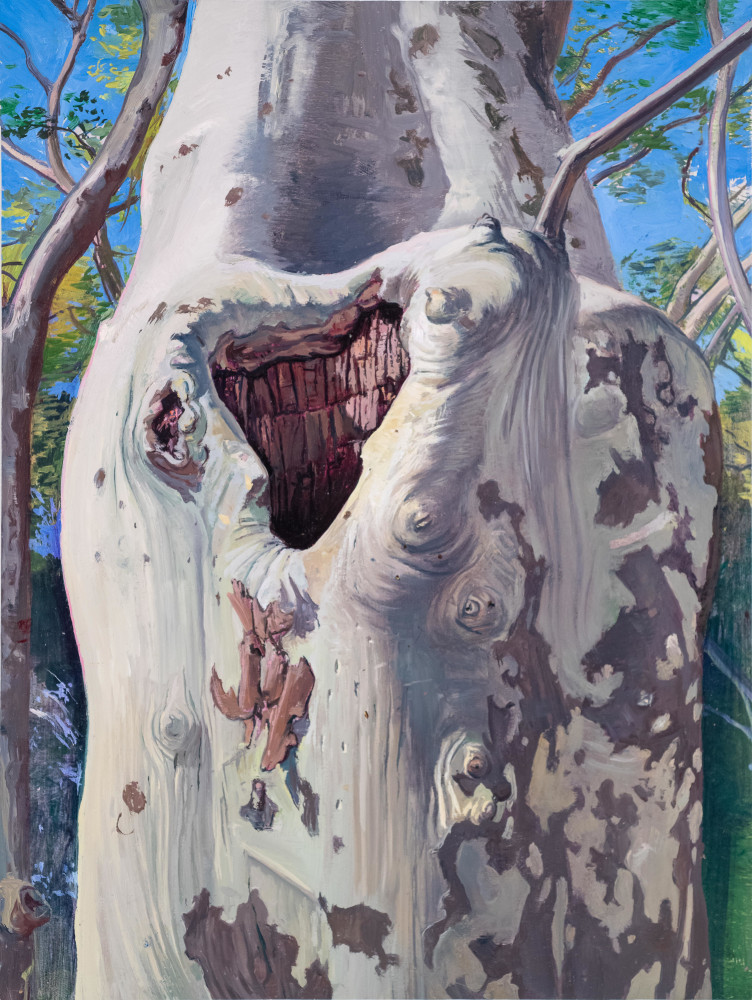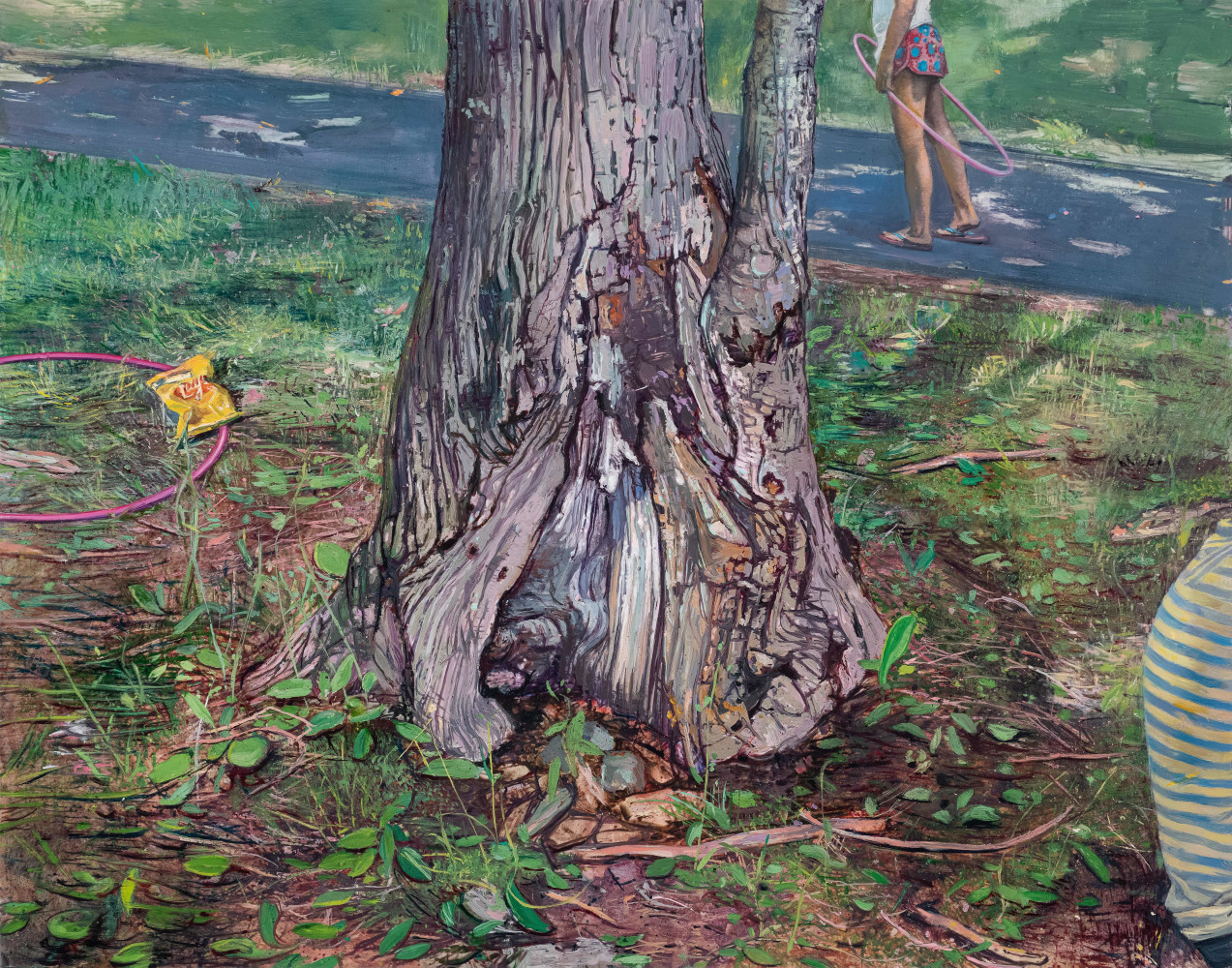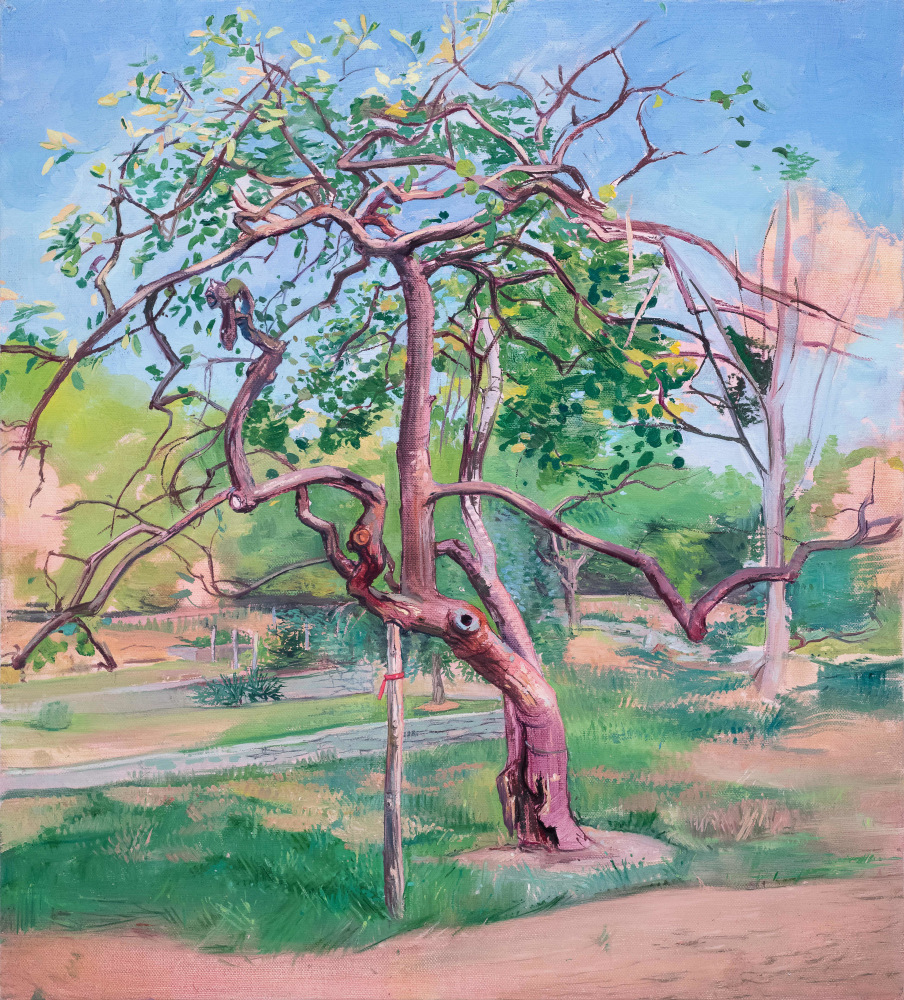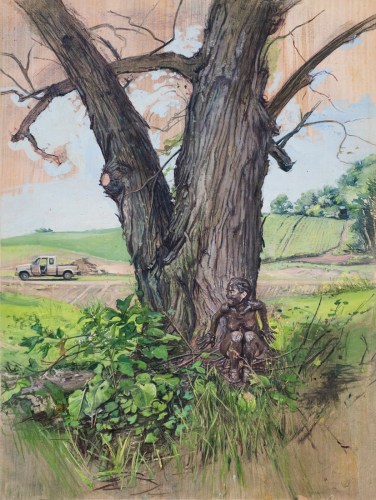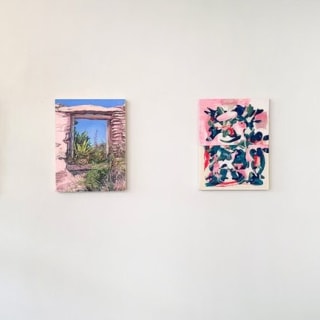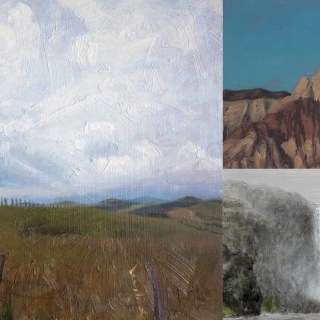
In 2007, I began replicating childhood toys in plaster, transforming them into white forms akin to archaic sculptures. This casting process allowed for a certain level of remove, subtracting the significance of the objects as commercial brands and reifying them as universal icons. As a congruent effect, my relational experience of the subjects changed and I felt a greater connection to them. These objects became maquettes for my paintings, which I introduced into landscapes both real and imagined.
My process continues to involve creating interaction between figures—sculptural or human forms—and landscapes. This interaction between the figural form and landscapes has elicited unimagined elements of surprise and opportunities for discovery. Sometimes the figural element is envisioned first and then I must find its location, and other times the opposite occurs, with the landscape initiating and informing the incorporation of form.
The images I have created also take inspiration from my fascination with monolithic icons of antiquity, such as the enormous heads erected by the, now extinct, Olmec civilization. Left behind in the landscape, like boulders remaining centuries after a glacier has passed, these monuments seem odd and out of place, magical and mysterious; the objects of mythic rites or even other worlds.) These sculptures make me question the role of the icon in contemporary culture and wonder, what will be the relic of our lives once we too have disappeared? My incorporation of cast or sculpted elements into paintings of contemporary American landscapes, re-contextulizes their significance and converts them into contemporary ruins or monoliths—archeological evidence of a society of questionable substantial significance.
Although many of these works are devoid of human figures, often there is evidence of their passage: seemingly inhabited ruins depict post-apocalyptic scenes where the individual in residence is constructing a semblance of civilization, patching together traces of the past, making the most of what is left and finding solace (perhaps even joy) within the aftermath.
My most recent series depicts a meditation on mortality. This subject has been a constant in my thoughts since the passing of my mother in 2010. It found its way into my work after a stay in the desert near Abu Dhabi. There I saw a body of a desiccating camel slowly returning to the earth it once walked upon. This abject image forced me to contemplate the cyclical nature of life. The human struggle is a desire for permanence. By exploring the nature of impermanence, a belief that nothing remains constant, the focus of my work solidified into an exploration of existence as a constant state of metamorphosis, which has become the mainstay and impetus for a multitude of metaphorical narratives supported and defined by the juxtaposition of diverse visual elements.
I feel vitally aware and alive then when painting plein air. It is a sort of athletic event, which I liken to hunting, fishing, or farming. One has to be prepared: palette mixed, location scouted out in advance, waking up before dawn arrive at your destination. After that, all you can do is show up, and go for it. There is a sense of urgency to capture the moment and see—to let go of analytical reasoning and take action. A certain flow happens. Self-consciousness leaves and a real connection to what is actual occurs. There is no time for judgment. When the painting emerges after an intense session of observation, there is a sense of satisfaction in carrying it back to the studio like a fisherman with a fresh catch. Collecting moments of time to take back to the studio.
Artist Statement
In this series of paintings, Melanie Vote draws inspiration from plein air excursions, infusing the work with a sense of mystery often encountered while painting in remote, less populated places. Each painting commences with a contemplative walk, leading to the discovery of subjects that demand attention. These subjects may evoke humor, unease, or curiosity, compelling enough for her to stay and paint.
Starting each piece outdoors to capture moments of natural awe before bringing them to resolution in the studio. The intent is to maintain the spontaneity inherent in working from life while introducing fictional imaginings that highlight humanity's role as either an interloper or evidence of their passing.

